Merriam Webster Dictionary’s definition of an audit – “A formal examination of an organization or individual’s accounts or financial situation, typically by an independent body.” Sounds pretty simple, right? You hire an independent auditor to examine your books and records and they issue a report on their findings. But what does an auditor really do? What is really in the auditor’s report? What can those “findings” tell you about your financial situation? And, how can you use that information to make better managerial decisions?
The audited financial statements can be an extremely useful tool and can provide a wealth of information. The goal of the audit report is to provide the reader with enough information for them to make an informed decision on the financial condition of the Association. But you have to know where to look and what to look for. Understanding the information provided could and should impact the decisions of Board members managing the Association’s finances and potential buyers looking to buy a home.
Audited financial statements for a condominium or homeowners association (“HOA”) are typically based on accounting principles generally accepted in the United States of America (“GAAP”) and should include the opinion, balance sheet, income statement, statement of cash flows and footnotes. In addition, although not part of the basic financial statements, GAAP requires that information on future major repairs and replacement be presented to supplement the basic financial statements. I am going to walk you through the different parts of the audit report and the audited financial statements and break down some of the common financial issues Associations are faced with, including what clues to look for as well as what to do once you find these clues.
AUDITOR’S REPORT
Let’s start with the auditor’s report. The audit report contains information regarding the Board’s responsibility for the financial statements, the auditor’s responsibility as well as the auditor’s opinion on the financial statements. It’s a common misconception in the industry that the financial statements contained in the financial statements are the responsibility of the auditor. The financial statements are the responsibility of the Board. The auditor’s responsibility is to express an opinion as to whether or not the financial statements have been presented in accordance with GAAP and that they are free of all material misstatements. Ironically, the opinion paragraph is the most important paragraph in the auditor’s report yet it is typically the shortest. The reason this paragraph is the most important is it gives the reader assurance that the information contained in the rest of the report can be relied upon. A typical, “clean” opinion states, “The financial statements present fairly, in all material respects, the financial position of the Association as of (a specific date, i.e. December 31, 20XX), and the results of its operations and cash flows for the year then ended in accordance with accounting principles generally accepted in the United States of America.” Although this statement doesn’t provide much information on the financial condition of the Association, it should give the reader comfort that the information contained in the report is free of any large errors or omissions and was audited by an independent accountant.
Now that you have read the auditor’s report and you know that you can rely on the following statements, let’s take a look at what they are saying.
BALANCE SHEET
The balance sheet is a snapshot in time showing you all of the assets and liabilities on the last day of the Association’s accounting year. The assets typically include items such as the amount of cash in the bank, certificates of deposit and other investments, the amount of maintenance fees and other assessments due from unit owners, prepaid expenses, interest income receivable on the investments and amounts due between funds (interfund balances). Liabilities may include accounts payable (unpaid bills), assessments received in advance (prepaid maintenance fees from unit owners) and loan payable, if applicable. The other important balances included on the balance sheet are the “fund” balances, which we will get to in more detail later in the article.
Similar to other organizations, cash flow management is one of the more important and sometimes challenging duties for the Board and management. The balance sheet provides a lot of information useful in determining if the Association is having issues with cash flow management, including:
1. Operating cash compared to accounts payable – Is there enough cash in the bank to meet the short term liabilities and pay the vendors?
2. Interfund balances – Is there a “due to/due from” the operating fund and other funds? And if so, is it an indication of a cash flow problem? If there are significant interfund balances, the Association may not be able to meet the future needs in one or more of the funds.
3. Accumulated operating deficit – Does the Association have an accumulated deficit which has, in turn, created a need to borrow cash from another fund? This borrowing would be reflected as an interfund balance or a “due to” other funds.
4. Accounts receivable compared to assessments received in advance – Do more unit owners owe at the end of the year than unit owners that paid in advance? If so, this could be causing cash flow issues and perhaps a need for stronger collection efforts. Has accounts receivable been growing in recent years?
INCOME STATEMENT AND STATEMENT OF CHANGES IN FUND BALANCES
The income statement shows the income and expense activity for the entire year. It includes all of the revenues and expenses as well as the allocations to each of the different funds. The income statement can also provide useful information regarding the Association’s operating performance during the year. This statement should be viewed in connection with the statement of changes in fund balances, which shows the fund balances that have been accumulated in each of the different funds. The most common of which include the operating, replacement and deferred maintenance funds. The statement of changes in fund balances should include the balance at the beginning of the year, the additions or reductions during the year and the balance at the end of the year. So what can these two statements tell us about the association?
1. Operating surplus or deficit – Is there a current year operating deficit on the income statement? If so, was it caused by something that was outside the control of the Board such as unanticipated repair expenses or unusually high snow clearing costs? This may be an indication of a potential special assessment or the need for an increase in maintenance fees.
2. Accumulated fund balances – Does the statement of changes in fund balance show an accumulated surplus or deficit? Are there adequate funds accumulated in the replacement fund? (Covered in more detail later under supplementary information)
FOOTNOTES
Now what would the numbers be without an explanation of what they mean? The footnotes do exactly that. The financial statements would not be complete with the footnotes to support the numbers in the financial statements. The footnotes provide information about the makeup of the Association, the significant accounting policies used to account for the financial activity, as well as information about specific line items in the statements. It is crucial to read and understand the footnotes in order to gain a full understanding of the financial statements as a whole. The footnotes may also provide information that may not necessarily show in the numbers such as:
1.Replacement fund – The footnotes should provide information such as the age of the study that was prepared to estimate the remaining useful lives and replacement costs of common property and whether or not the Association is funding in accordance with the engineer’s recommendations. All of this information will provide clues that indicate whether or not the replacement fund is adequately funded.
2. Pending litigation or settlements – The footnotes should provide information relating to pending litigation including the claims, status and resolution. This may indicate that monies may due the Association or more importantly may indicate that the Association may need to pay out a certain amount of funds which could lead to increased fees or a special assessment.
3. Subsequent events – The footnotes to the financial statements should include relevant significant events, such as a special assessment, that occurred after the end of the year up to the date of the report.
REQUIRED SUPPLEMENTARY INFORMATION – REPLACEMENT STUDY / REPLACEMENT FUND
The required supplementary information is not part of the basic financial statements discussed above but it is required by GAAP as an important part of understanding the financial condition of the Association, specifically, the replacement fund. The information provided in the supplementary information section provides a summary of the components of common property including the date the study was prepared, a list of the components, estimated remaining useful life of those components and the estimated replacement cost as of the date of the study. The #1 most common question I get from Board members is regarding the adequacy of the replacement fund. “How do we know if we have enough?” The truth is you never really know, but you can take steps to minimize the risk of not having enough. I usually answer that question with 3 questions and the answer to those 3 questions will tell you if you are on the right track.
1. Does the study include all common property components and is the study? Was the study prepared within the last 3-5 years?
2. Is the Association funding the replacement fund based on the engineer’s recommendations in the study?
3. And, is the accumulated cash balances set aside in a separate bank account, earmarked for the replacement fund?
If the answer to all 3 is “YES”, then the Association is doing all it can do to be prepared for the future replacement of the common elements.
As you can see, there is a plethora of information that can be found in the audit report. It can be overwhelming for many Board members and potential buyers but if you know what to look for it can be an extremely valuable tool.





